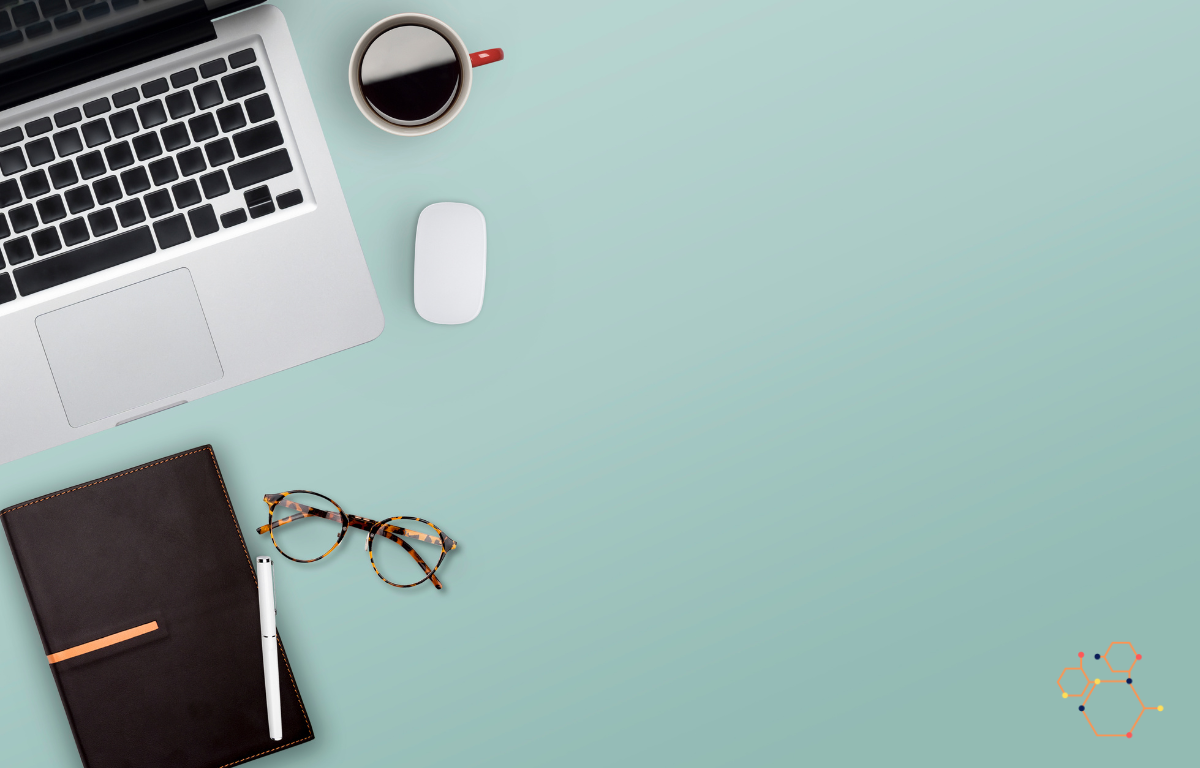According to data published by Gettysburg College, most employed people spend about 30% of their time working. More specifically, the average full-time employee typically spends about 1,300 hours sitting at their desk each year, which makes up a significant portion of one’s daily life. It’s therefore crucial to ensure that this time is spent in a space that not only optimizes productivity, but ideally also mitigates stress and stimulates joy and comfort while you work.
Though there are many schools of thought on what contributes to an optimal workspace, we’ve compiled some tips, drawing from feng shui and color theory, that can help you create the ideal desk setup for your unique professional needs and career goals.
Personalize your space
Adding personal touches to your space is especially important for those working in an office environment, but it can be just as beneficial to carve out a space that’s all your own when working at home.
Whether or not you work from home, think about incorporating photos of family or friends, your favorite places, or anything that energizes you. Especially for those working in cubicles, small offices, or spaces that feel somewhat isolated, this can help call to mind the world beyond those four walls.
Though you may not be able to use your comfiest chair or bring your canine companion when working in an office, try bringing some smaller sentimental tokens into your workspace: perhaps a favorite mug for your morning coffee, a small piece of art, or a print-out of a quote that motivates you or reminds you of your goals. Catching glimpses of these items throughout your day can be a source of joy and inspiration, especially in an office where you may have less control over your surroundings. Adding these personal touches to your desk set-up can also be a great way to open yourself up to connecting with colleagues through possible shared interests.
Tap into feng shui
Feng shui is an ancient Chinese practice to establish harmony between a person and their surroundings. It draws upon the idea that everything contains energy, even inanimate objects, and that by creating balance between opposing energetic forces, you’ll achieve greater harmony in your space and within yourself.
Though many of us have heard of feng shui, and perhaps understand how it applies in a larger space, incorporating feng shui into your desk setup on a smaller scale is a great way to direct positive energy towards your goals. Using these principles, you can design a space that’s conducive to working towards your specific career objectives.
For example, your desk’s color and material can greatly affect your office’s feng shui. If you have the freedom to select your desk, consider your overall goals and the energy you hope to usher into your career. According to feng shui principles, a wooden desk is sturdy, and can lay the groundwork for increased stability in your professional life, though it may not energize your mind. Glass desks are quite fragile, and energy may pass through them too quickly. Metal elements on your desk can increase mental clarity, but may tire the body. An ideal desk setup often incorporates several of these materials, with proportions of each set according to the energy you wish to attract.
Feng shui also dictates that it’s important to avoid facing a wall whenever possible, as this closes off energy flow. The ideal desk position, referred to as the “commanding position,” is diagonally opposite the door, facing the door without being directly in line with it, to allow for more positive energy flow and a sense of authority in your space.
While it may not be possible to set up your desk in a true commanding position, try ensuring that your back is to a wall, adding a sense of safety, and that all windows and doors in the room are in view. If your desk must face a wall, try adding a mirror opposite, which reflects light and allows you to see the door from where you sit.
Go green
Feng shui is just one of many schools of thought which agree on the importance of the colors within your space. Though we’re often unaware of it, the colors around us can trigger changes in our mood and deeply influence the way we feel within an environment. Understanding the basics of color theory can help you set up your desk with a color scheme conducive to your best work.
Blue is said to best stimulate productivity, contributing to a sense of calm and helping with focus. Similarly, green can mitigate stress and make a workspace feel more peaceful, partially due to its association with nature.
One way to add a calm and refreshing pop of green to your office is to incorporate plants. “I keep one of my succulents on my desk to brighten up the space,” said Carter Lewis, senior scientific recruiting associate at Sci.bio Recruiting. “I like to keep my desk organized and free of distracting clutter but still have a touch of my personality. Incorporating plants reminds me of the outdoors, and I find it particularly impactful on long winter days, or when I’m hyper-focused on a rough day at work and need a reminder that there is more to life outside of the screens we’re looking at all day.”
Feng shui also touts the benefits of adding plants into your workspace, which can invite growth in your professional life. Consider bringing a few low-maintenance plants, such as succulents which require little day-to-day care, into your office space.
Warmer colors, on the other hand, create more stimulating spaces. Red can increase confidence and motivate people to act more boldly, while yellow can encourage positivity. For a harmonious desk space, try adding accents from each color family according how you intend your workspace to feel.
Clear away clutter
It may seem obvious, but it bears repeating: tidy desk, tidy mind. It can be harder to focus on your day-to-day tasks, and to think more broadly about your bigger-picture goals, when your workspace is crowded and messy. Persistent clutter can also contribute to feelings of stress or anxiety, and can even lead to increased procrastination on important tasks. Feng shui comes into play here too: While a totally empty desk can symbolize an absence of energy in such a crucial space, a desk that’s too cluttered can be a sign of stagnation.
Luckily, a cluttered desk can be easily addressed. Take a few minutes each day, either at the beginning or the end of your workday, to clean up and organize your space. Figure out what objects you use daily, and if there are things you don’t reach for as often, consider moving those to a desk drawer.
As discussed in “Technology to Lighten Your Load in 2024,” various tools and software can help streamline your work processes, reduce clutter, and create a more organized, effective workspace. For example, incorporating cloud-based storage solutions can eliminate physical files from your desk, making room for more personalized touches and keeping distractions at bay.
If your work requires having many tools or documents on hand, desk organizers can be a great way to keep things in order while maintaining easy access. Not only will this help your mind feel more clear, you’ll no longer need to spend valuable time sorting through a mess to find what you need.
Comfort is key
We all know that extended hours sitting at a desk and staring at a laptop can be uncomfortable, and down the line can even contribute to health problems such as back pain or carpal tunnel syndrome. Luckily, the strain can be minimized by considering optimal ergonomics when picking your office furniture.
Choose a chair that supports your spine, and allows you to adjust its height so that your knees are about level with your hips and your feet are flat on the floor. Position your keyboard or laptop in front of you, allowing your wrists to be aligned with your forearms and in turn reducing tension in your shoulders. Even with proper workspace ergonomics in place, it’s still vital to take breaks throughout the day to stand up, stretch, and move your body.
Ultimately, given how much time each of us spends at our desk, the most crucial element of designing a workspace will be your day-to-day comfort. Whether at home or in an office, an optimal desk setup will vary greatly from person to person depending on your role and how you work best, so it’s important to figure out what’s most conducive to your professional goals. Try these tips, paying attention to how your focus and productivity might change, and keep only those which contribute to a more positive and successful workday.
References:
Office workers spend too much time at their desks, experts say
Maximize Your Desk Space with These Smart Tips!
11 Tips on How To Organize Your Desk Like a Pro
The Basic Principles of Feng Shui
Feng shui: a beginner’s guide to getting the layout of your house right
How to Feng Shui Your Desk
The Case for Finally Cleaning Your Desk
How to Feng Shui Your Desk
How Color Psychology Impacts Today’s Workplace
Color psychology: How to choose the right colors for your workspace
Procrastinators and Clutter: An Ecological View of Living with Excessive “Stuff”








